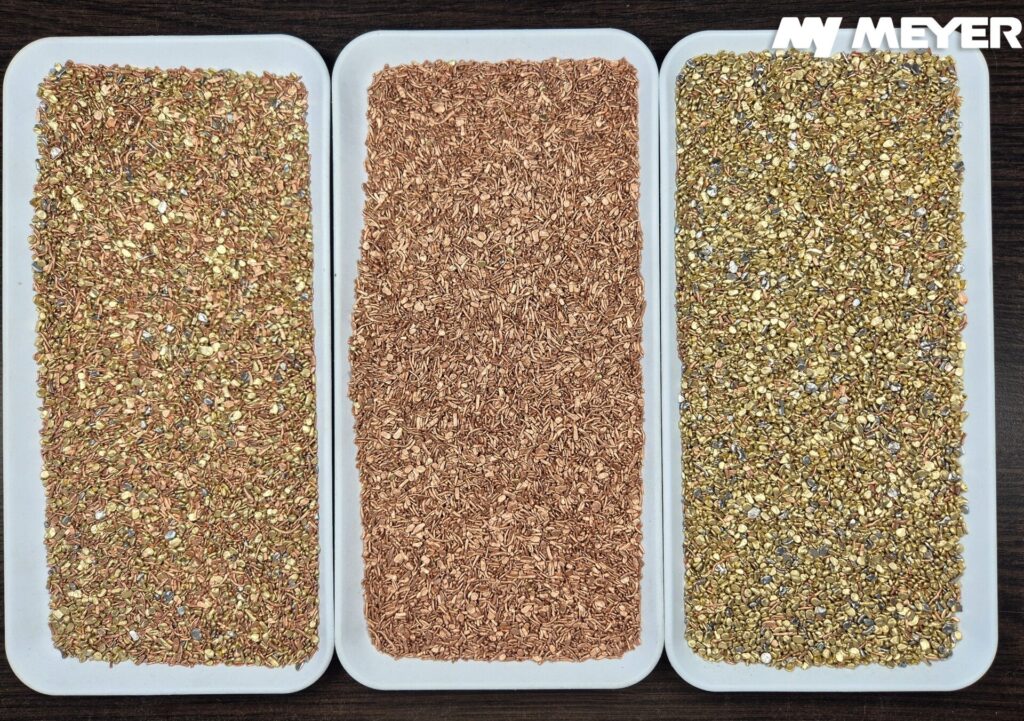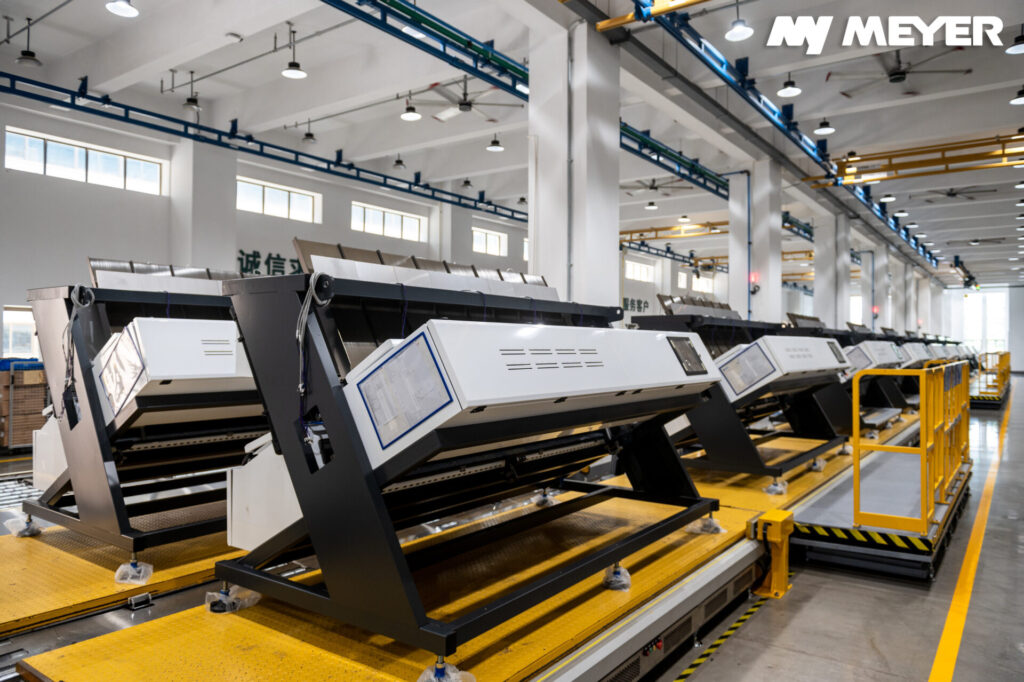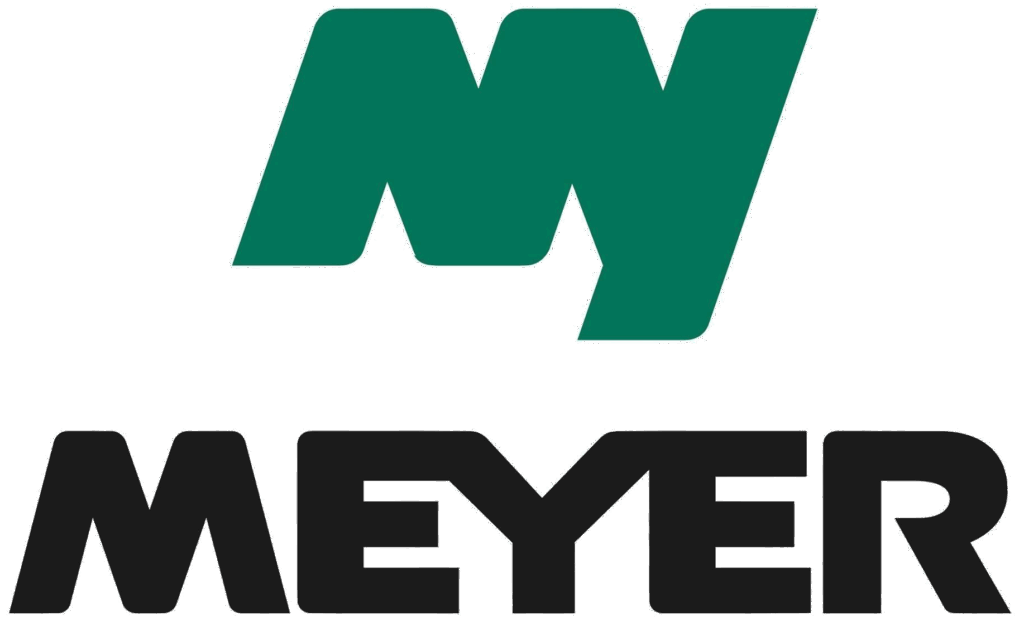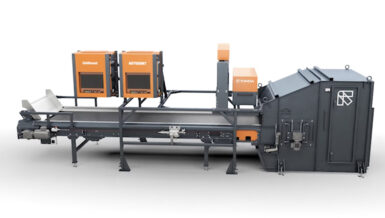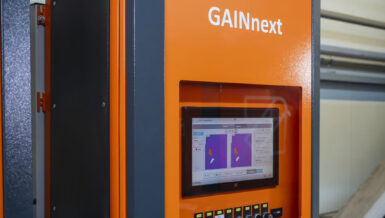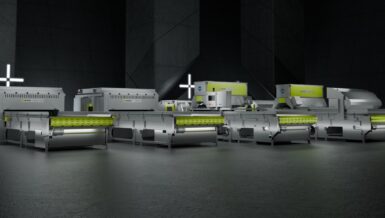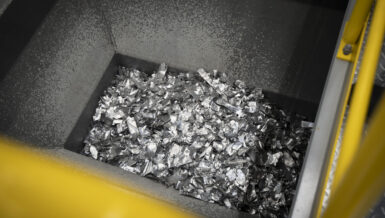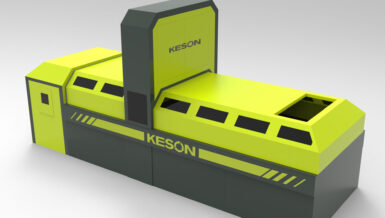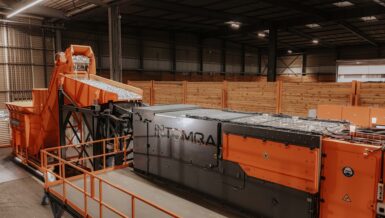In response to these challenges, a technology once considered innovative is now becoming a standard in recycling plants: optical sorting. Thanks to continuous advances and the use of AI-powered deep learning algorithms, it is now possible to separate materials that previously required costly treatment or were excluded from the recycling stream altogether. As a result, optical sorting of metals not only raises the purity of secondary raw materials but also increases the economic viability of recycling processes.
From Detection to Separation: The Technological Process
Optical sorting works much like an “eye that never tires of watching.” As the material stream passes through the detection zone, cameras capture every detail – color, shape, light reflection, and even surface texture. The image is then processed by a system powered by AI algorithms, capable of identifying the type of metal based on its color: steel, aluminum, brass, copper, or other non-ferrous metals, within a fraction of a second.
The system operates continuously, analyzing each individual particle in the flow and automatically diverting unwanted fractions into designated channels using precise jets of compressed air. This approach ensures maximum purity, minimal losses, and a level of process consistency that traditional mechanical methods simply cannot provide.
What’s more, these sorting machines are highly efficient, capable of processing hundreds of kilograms or even several tons of material per hour, all while maintaining best quality output. This makes them not just a symbol of technological innovation, but a tangible driver of profitability across the entire production process.
Technology in Practice: An Example of Metal Recycling Implementation
One example that clearly demonstrates the potential of optical sorting is its application in a facility specializing in recovering metals from waste streams (such as post-cable waste). Before the installation of the new system, the main challenge was the high complexity of the material stream and the limited efficiency of traditional separation methods. The input material was copper with a variable purity level of 95–98%. This required additional cleaning stages, which reduced process profitability and made it difficult to meet the increasing quality demands of downstream customers, ultimately lowering the market value of the final product.
Given these challenges, the decision to implement optical sorting was a natural step forward. The goal was not only to improve the purity of recovered metals, but also to reduce material losses and increase overall process stability. The implementation involved installing a Meyer CG12 Optical Sorter, equipped with high resolution cameras and the company’s patented Maglev 3.0 ejectors working on a frequency 1200 Hz. This allowing us to effectively sort tiny elements even from 1mm with a superior yield of accepted and rejected fraction. As a result, the facility achieved top grade copper with a purity level exceeding 99.95%, while simultaneously separating other metallic fractions from the waste stream, including aluminum, lead, and brass. The use of MEYER CG.P 12 optical sorting simplified further processing and increased the value of the final product.
Remarkably, the benefits were visible immediately after installing the optical sorter – improved quality of recovered metals, minimized waste, greater plant automation, compliance with environmental and regulatory standards and exceptionally throughput capacity. This case shows that investing in advanced separation systems is not just about technological innovation. It’s a real way to improve both the efficiency and profitability of the entire process. It highlights how optical sorting technology is becoming a practical tool for strengthening the competitiveness of companies operating in the recycling industry where the mechanical cleaning is insufficient.
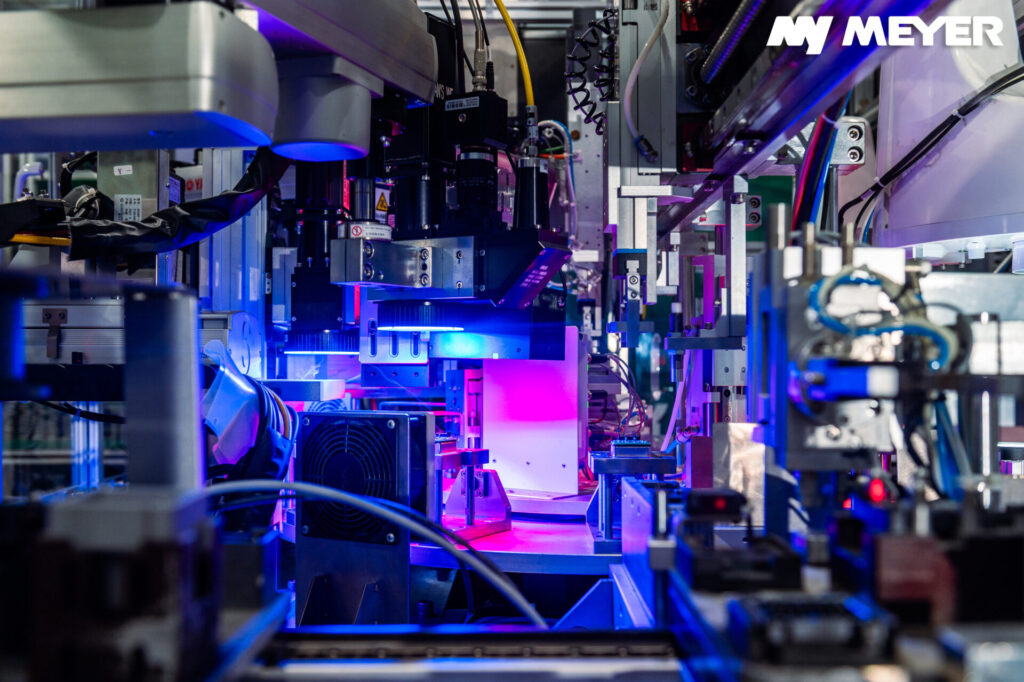
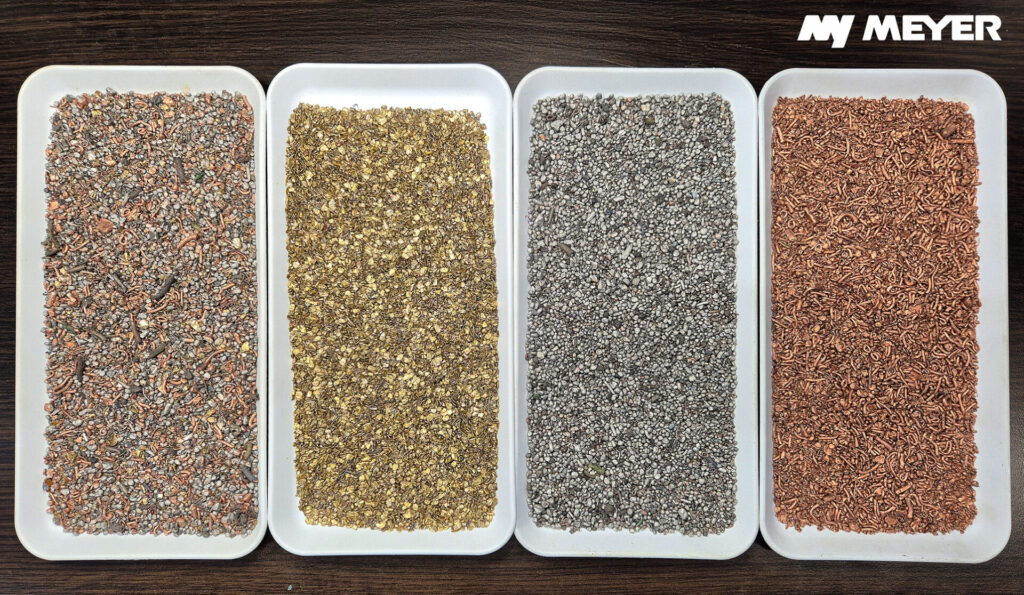
Optical Sorting – Profit for Business, Relief for the Environment
The case study presented shows that the use of optical sorting is reshaping the way we think about the circular use of secondary materials. What is most important is that this technology operates at the level of individual particles, yet its impact can be felt across the entire value chain.
The first noticeable outcome of implementing such processes is the reduced demand for primary raw materials. With optical sorters and complementary purification methods, metals can reach a level of purity comparable to newly extracted material. In practice, this means companies are no longer forced to blindly chase market fluctuations. They hold in their hands a resource that provides greater independence and stability in the face of market volatility.
Secondly, recycling profitability can be seen to rise. The high purity of recovered fractions allows them to be sold at a higher margin, while at the same time reducing the costs of further material processing. From the perspective of the plant owner, this leads to a faster return on investment in the technology.
Thirdly, the environmental benefits cannot be overlooked. Every ton of material returned to circulation means a real reduction in emissions associated with mining, transport, and processing of natural resources. Optical sorting also minimizes the amount of waste lost from the recycling stream, also reducing pressure on landfills and ecosystems. As a result, this technology becomes not only an economic tool but also a response to climate policy requirements and sustainable development goals.
In conclusion, the example of implementing sorting technology proves that optical sorting is not merely a technical solution. It is an approach that shifts recycling from simple “waste management” toward actively creating a market for valuable secondary raw materials.
The Future of Recycling is Optical
Implementation of optical sorting in metal recycling is an example of how technology can genuinely change the rules of the game. At first glance, it may seem like “just another machine on the line” but in practice, it’s a tool that redefines the way we think about the circulation of raw materials. Copper purity exceeding 99.95%, process automation, separation of valuable fractions, and the immediate reduction of further processing costs – these are not only figures, but above all proof that innovation can quickly translate into real business.
The greatest value, however, turns out not to be the precision of separation itself, but the chain effect. The plant gains stability and process predictability, operators – greater control over quality, and the company – independence from fluctuations in the primary raw materials market. It is an investment that not only “pays for itself,” but actually opens new spaces of profitability.
Importantly, the full potential of this technology is only beginning to unfold. As the market continues to demand purer metal fractions and closed loop systems, optical sorting will shift from being a luxury to becoming a necessity. For the recycling industry, this offers not only a way to increase the value of recovered materials but also a strong argument that it is precisely this sector which provides solutions for the economy of the future, contributing directly to the renewed use of natural resources.

